Hey Guys!
Let’s see how Calgary’s Real Estate market is changing with higher interest rates! The Bank of Canada announced a 0.75% rate hike this morning (see below).
We’re reviewing some key statistics that look at supply of housing. When this info is layered on with housing demand, we can start to anticipate near term trends.
Let’s look at:
1. Sales to new listings ratio.
2. Absorption rate.
3. Average/Median price.
Detached Homes:
Sales To New Listings:
This ratio indicates near term supply changes.
Elevated ratios indicate more sales relative to new inventory coming onto the market. As an example, look at November and December 2021—the ratios were over 100%.
Lower ratios indicate either more inventory is coming onto the market, or lower sales numbers. An example of this is July-September 2018.
Today, our sales to new listings ratio is within historical norms and rather flat since February of this year.
Calgary detached home sales have seen a reduction, but combined with lower new inventory—so this ratio remains flat.
The angle of this ratio for the remainder of the year is likely to influence the angle or prices for the Spring 2023 market.
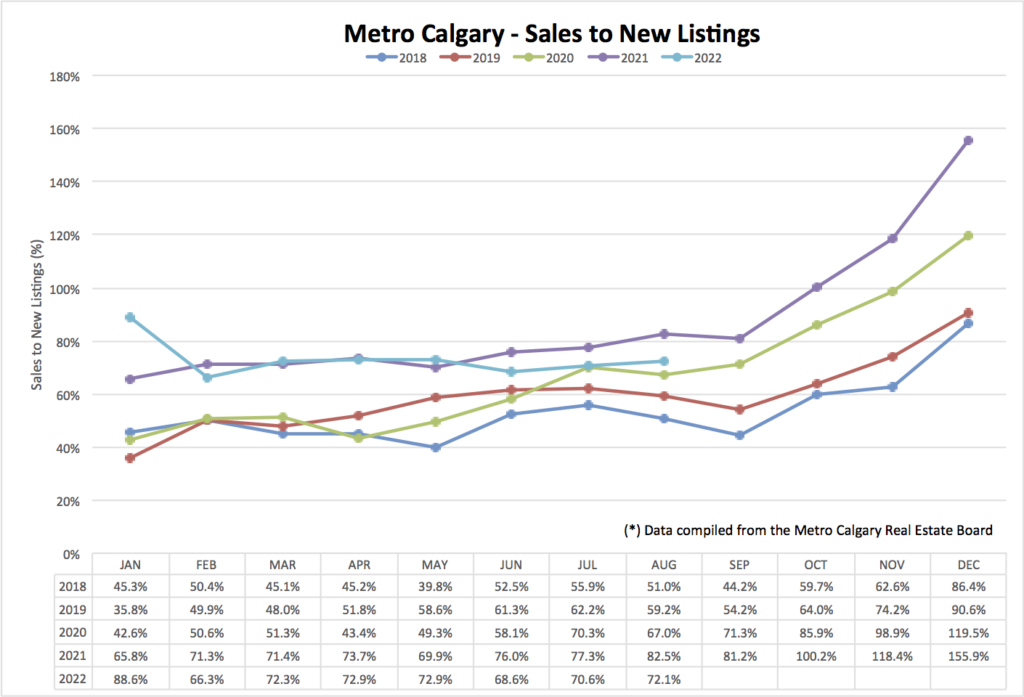
Absorption Rate:
At a glance, the absorption rate is a easy indicator to gauge the health of a Real Estate market. This data point combines sales with total inventory to produce a time frame (months) to liquidate all existing homes for sale.
Higher absorption rates typically indicate favorable negotiating terms for buyers. Lower absorption rates typically slant negotiations in the sellers favor.
A recent example of low absorption rates, and how that influences the market was Jan-March of this year. Really, the absorption rate was at the extreme lower bound—resulting in extreme price movements higher.
Today, Calgary’s detached absorption rate is still on the lower bound. Sales numbers AND new listing inventory are down since February 2022. This is helping keep absorption rates lower.
Sales Feb 2022: 2,280
Inventory Feb 2022: 2,191
New listings Feb 2022: 3,152
Sales Aug 2022: 1,067
Inventory Aug 2022: 2,389
New listings Aug 2022: 1,480
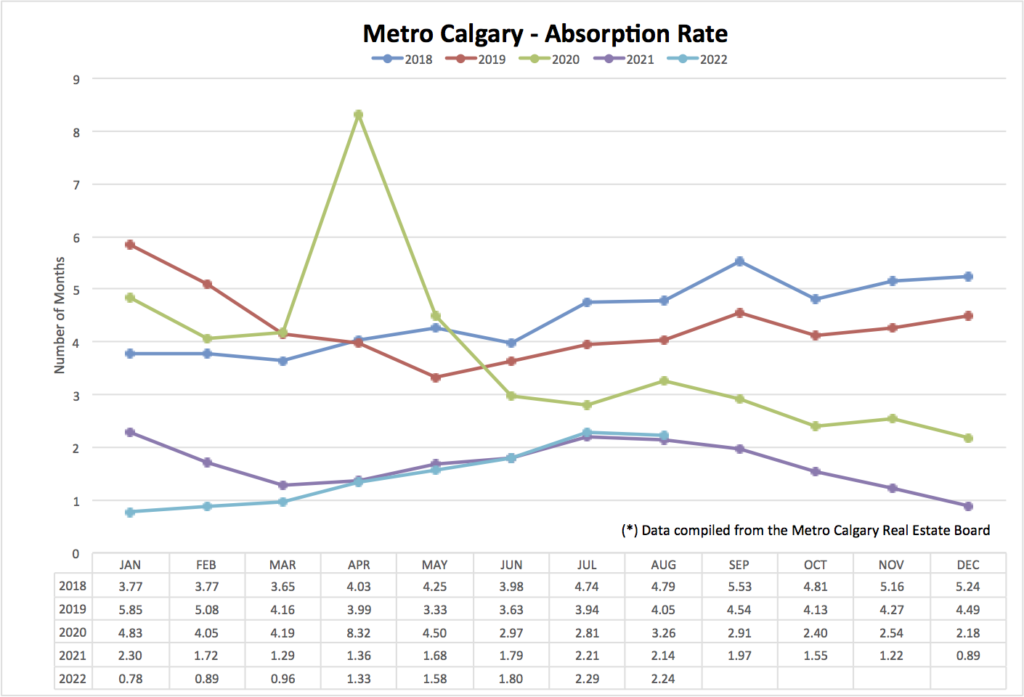
Average Price:
With sales to new listings relativley higher than years past, and the absorption rate at the lower end of “balanced” — Calgary’s average price has held month-over-month.
New inventory entering the market is likely to remain a key statistic to watch in the coming months.
Note, median price (second image below, blue line) is still trending lower month over month though.
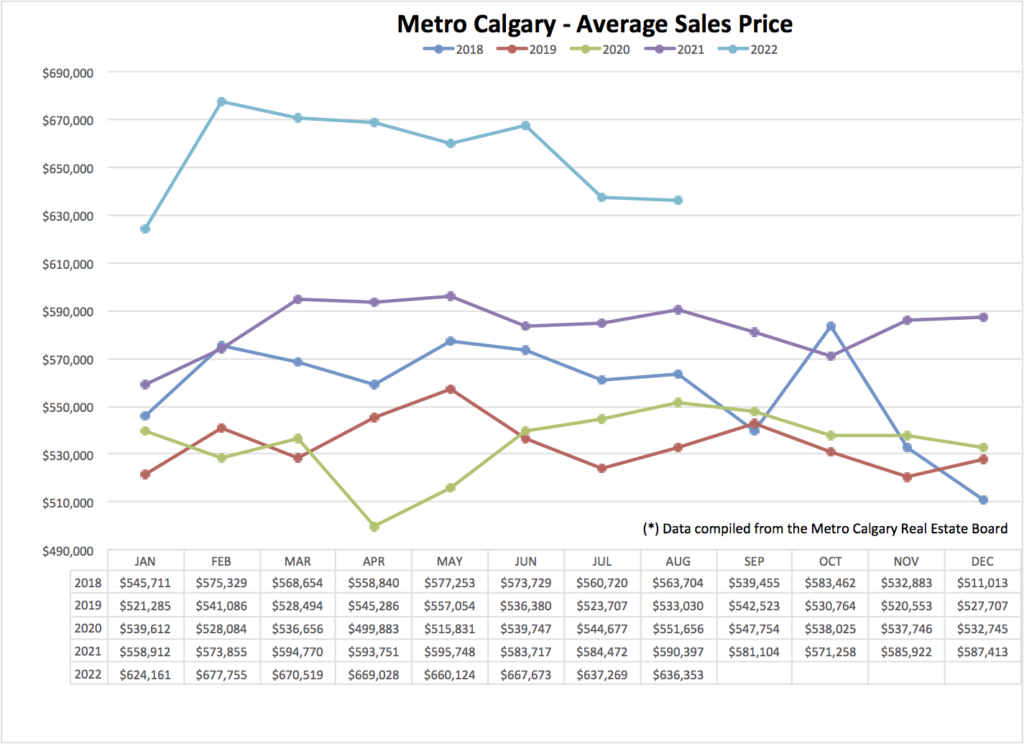
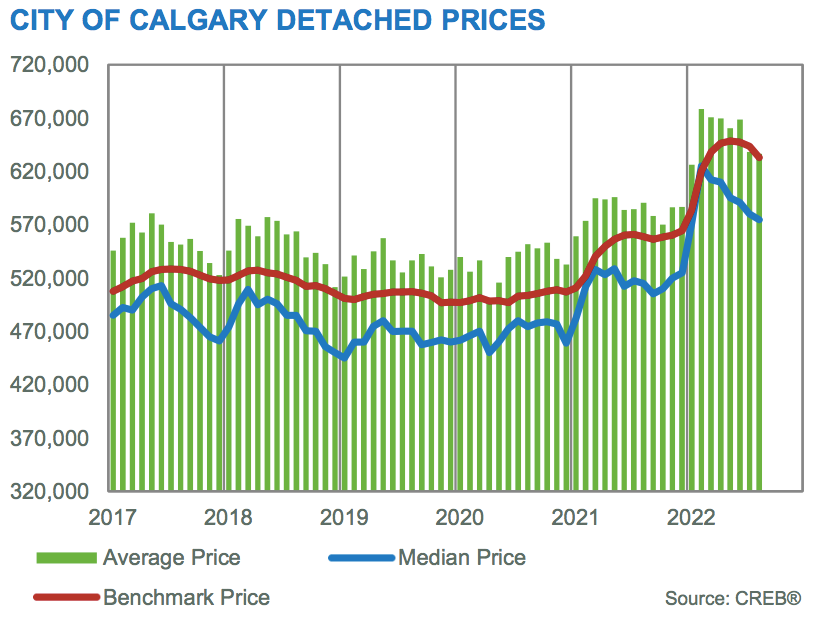
Apartment Home:
Sales To New Listings:
HELLO! This ratio is WAY up month over month and year over year.
From chief economist at CREB, Ann-Marie Lurie, “While higher lending rates have slowed activity in the detached market, we are still seeing homebuyers shift to more affordable options …“.
Sales June: 581
Sales July: 513
Sales August: 524
I’m hearing from several Realtors that out of town investors are still considering Calgary condo apartments as a profitable investment.
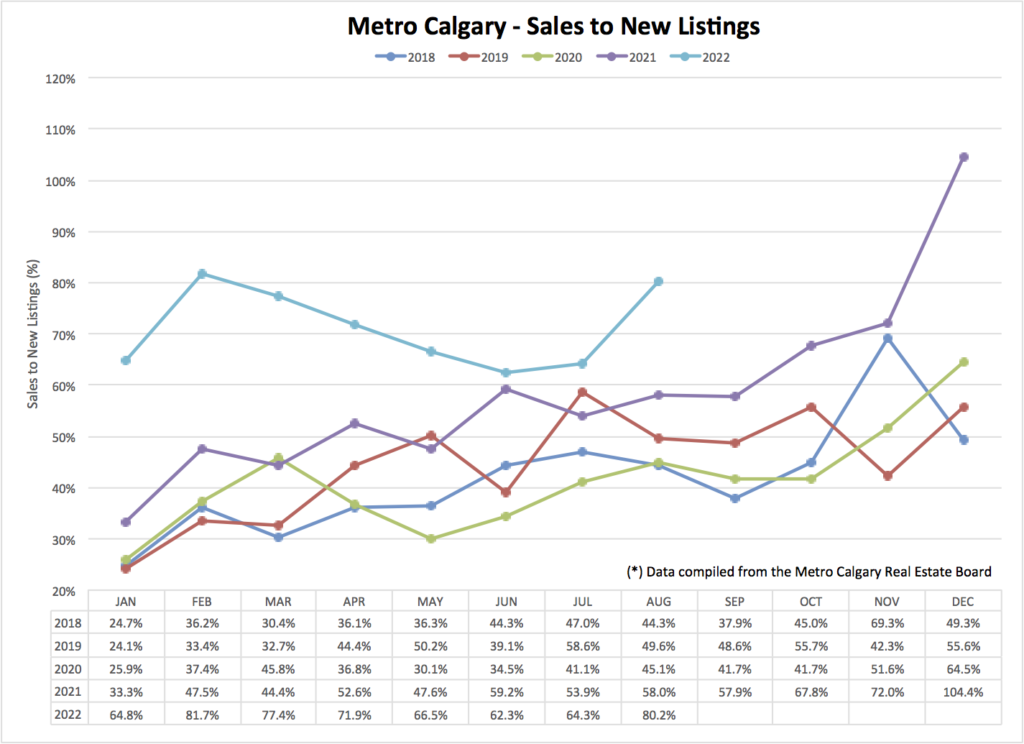
Absorption Rate:
Apartment absorption rates continue to buck long-term trends lower m/m and y/y.
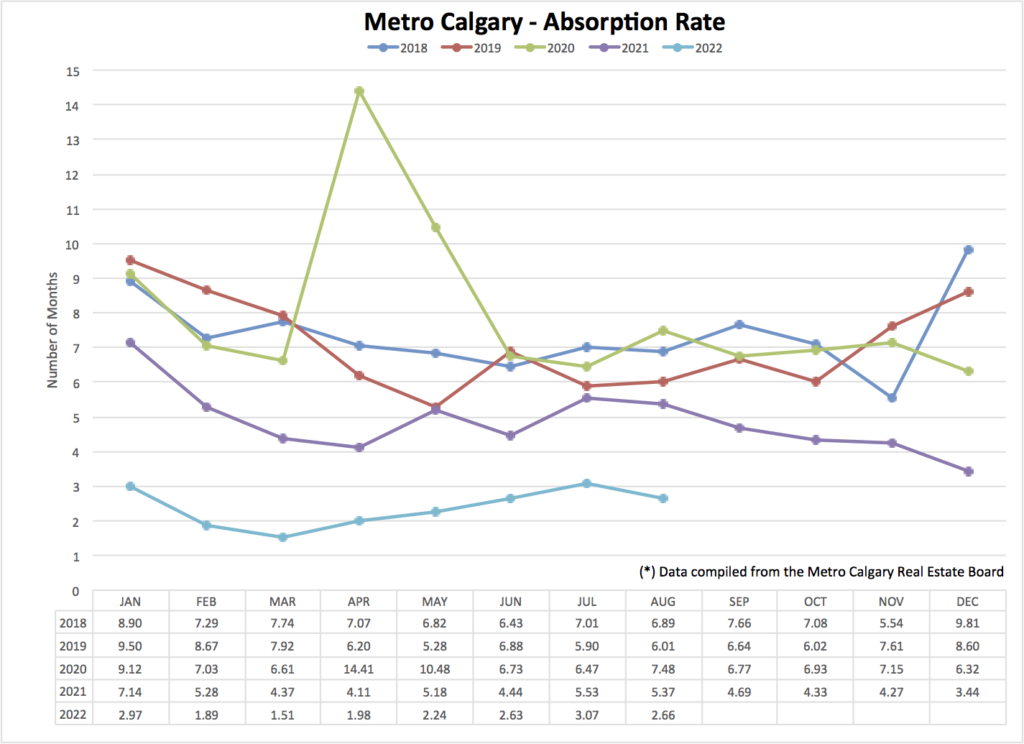
Median Price:
With such supportive sales-to-new-listings and absorption rate data, I would likely conclude median price would be UP. Alas, it’s not …but upward pressure is building.

Conclusion:
Higher interest rates continue to be the theme for the second half of 2022. Higher borrowing costs are a natural headwind to Real Estate prices. However, as we are experiencing, if inventory remains low, prices remain sticky down.
This does create opportunity though …we are seeing this in a tightening apartment market. For many years, over supply of apartments was a gorilla on this segments back. Times are changing!
Another opportunity is Mortgage pay down. Higher rates start to change the conversation from “leverage” to “debt pay down”. Consider consulting with a financial planner though. Contact me to inquire about how to pre-pay and what pre-payment privileges you have.
The Bank of Canada just announced a 0.75% rate hike. Here are two rates to note:
- Bank of Canada key central rate: 3.25% (courtesy of ATB)
- Commercial bank prime rate (RBC, CIBC etc): 5.45%
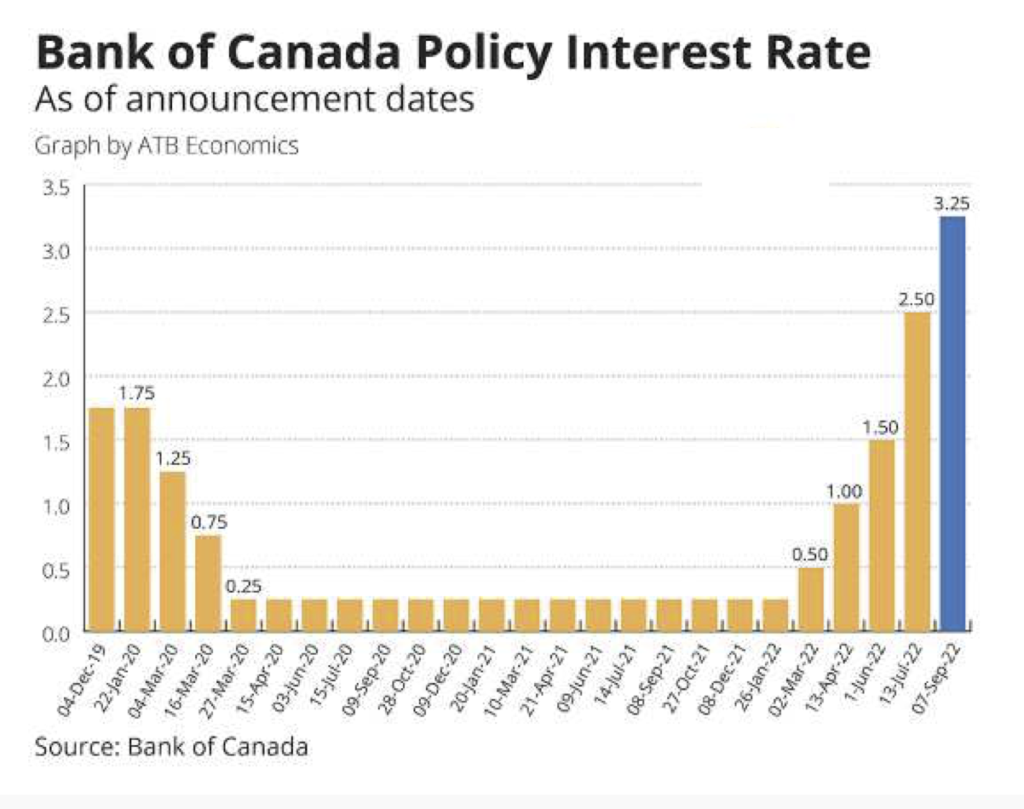
Any major Bank of Canada rate change takes 12-18 months to be fully priced into the market. The first rate hike, back in March, is still yet to take full effect! Interesting times.
I hope this update his helpful! If you have any questions, please let me know.
Cheers,
Chad Moore
P.S.
Football! The smell is in the air, combined with the angle of the sun that tells me it’s football season! What do you associate this time of year with?

